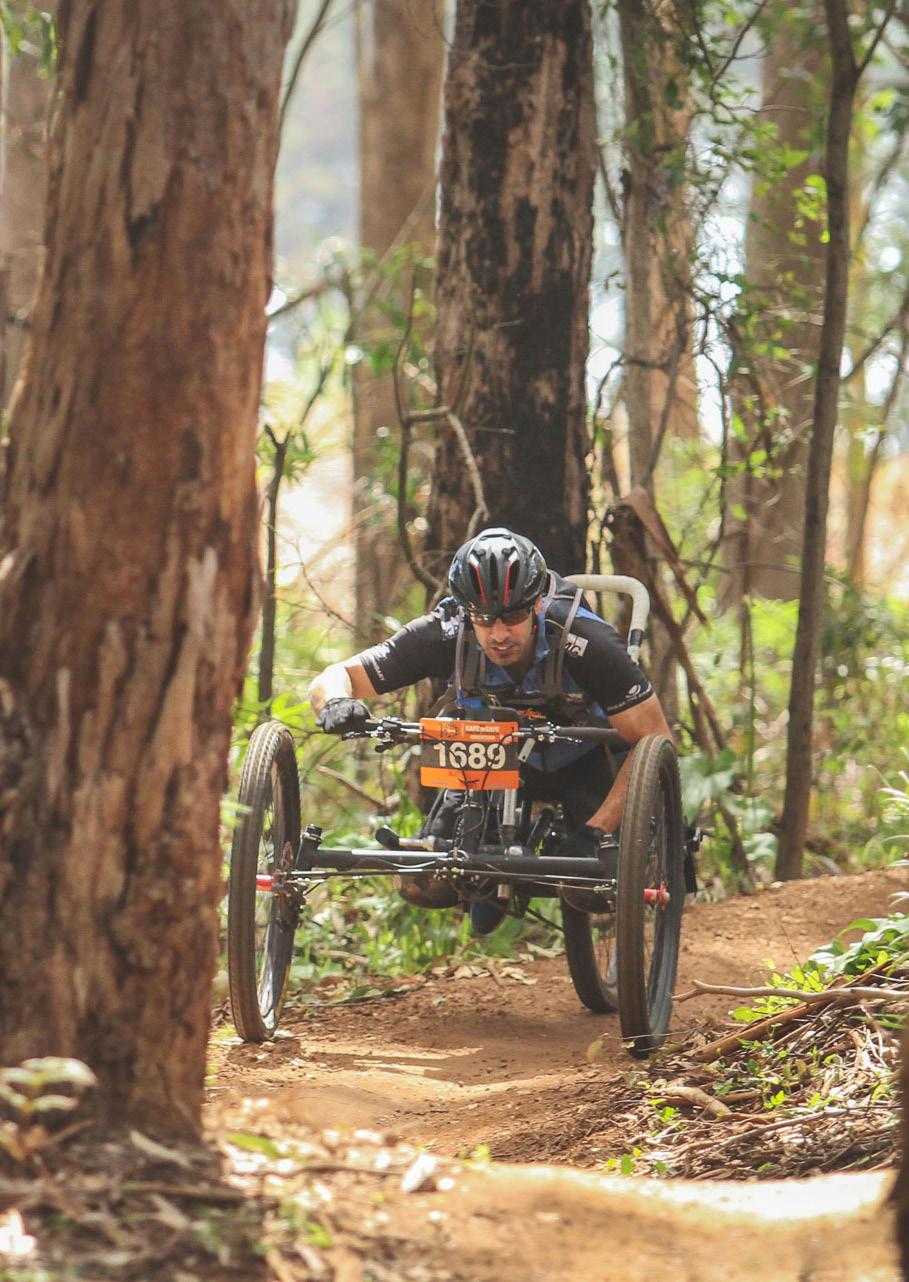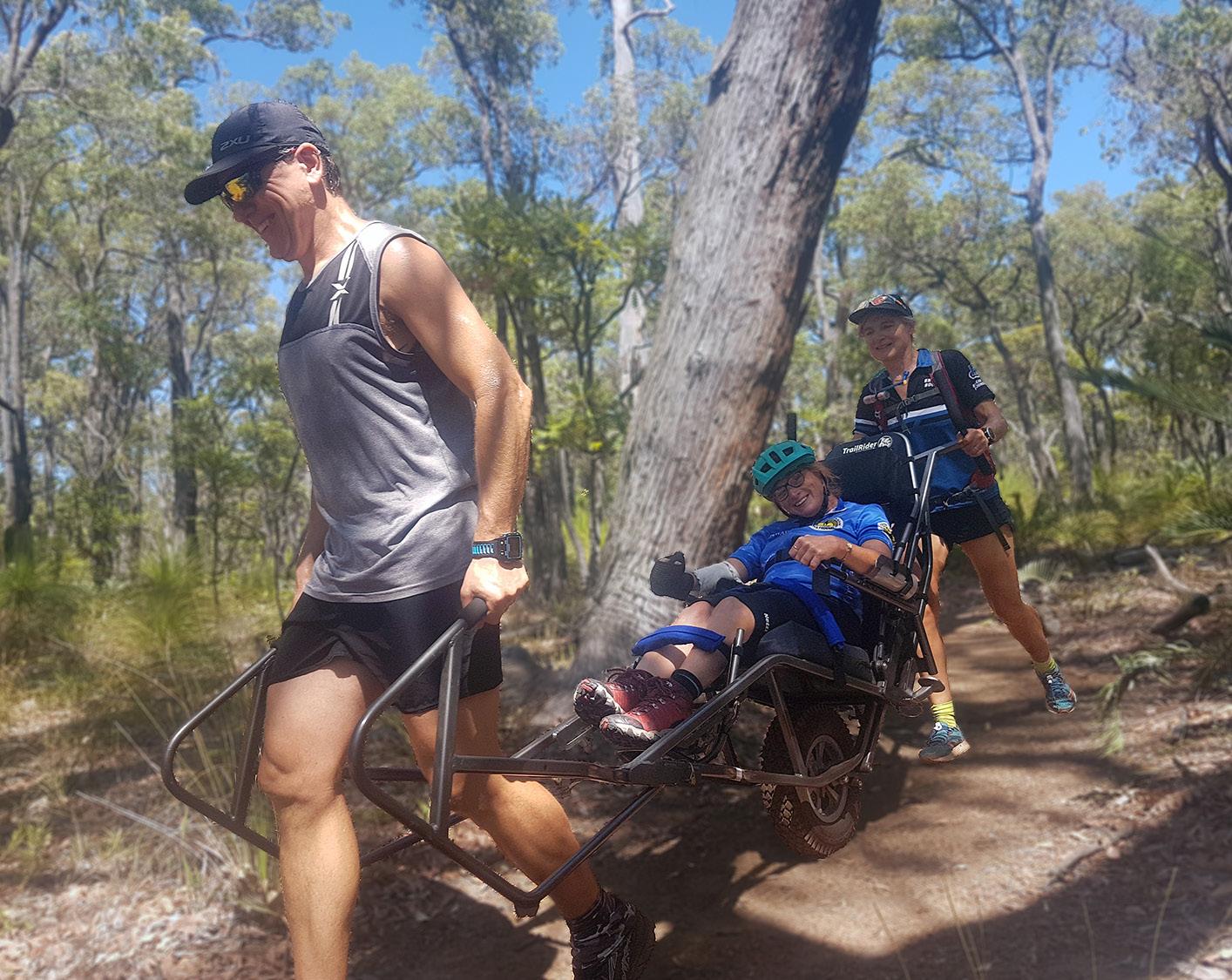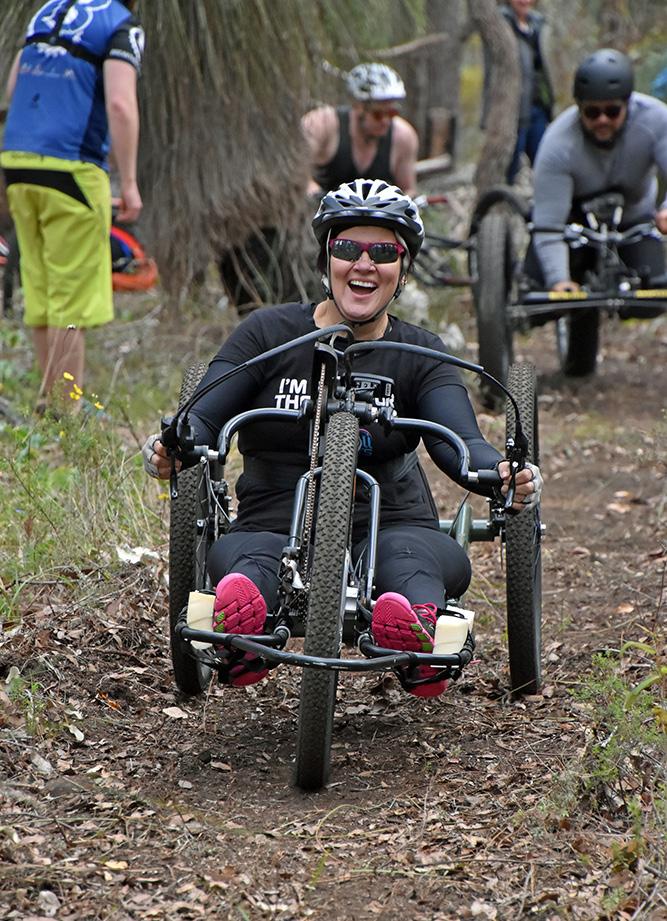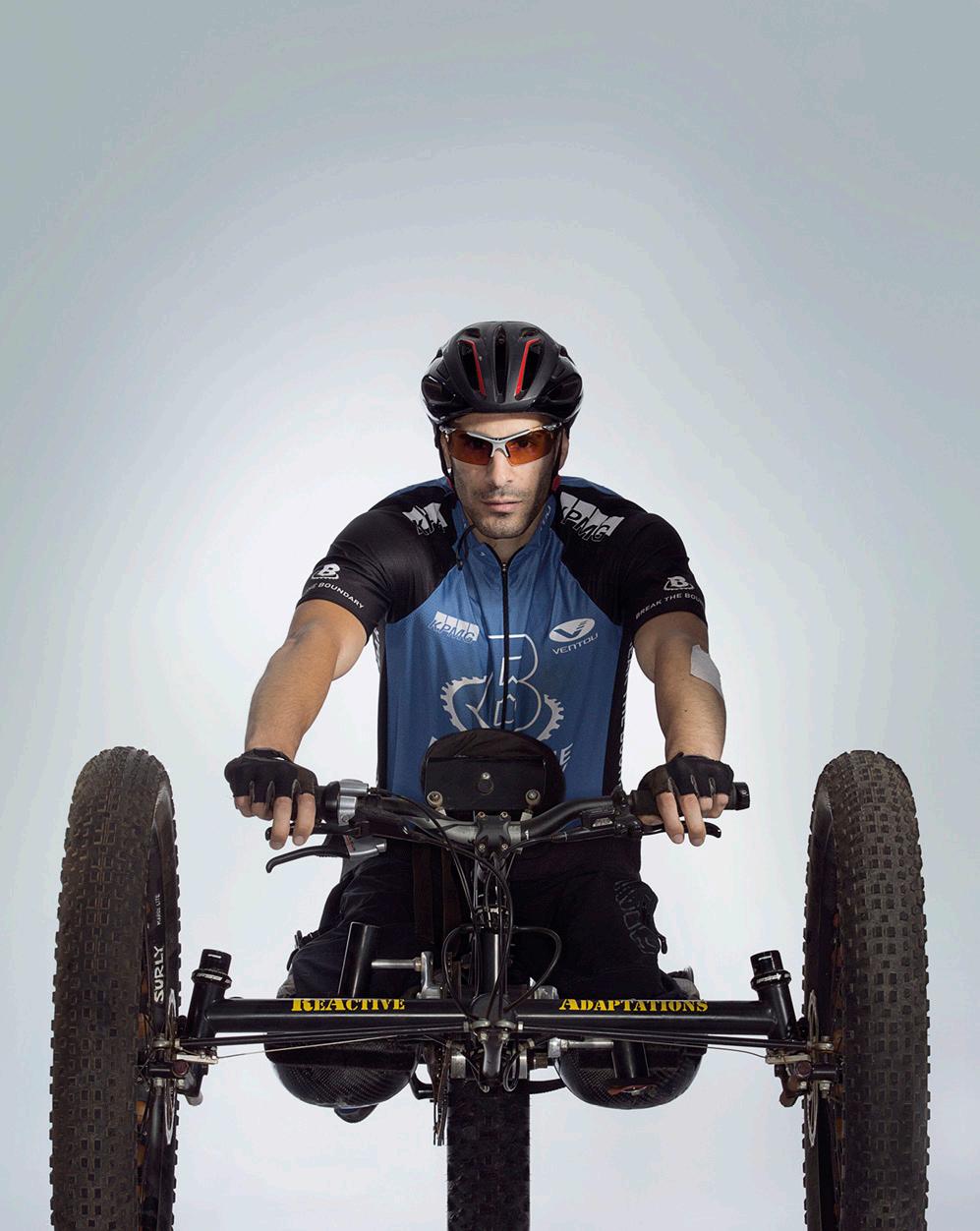
8 minute read
Take a Hike – How to Access the Impossible When Every Mountain is a Boundary
by Andrew Liddawi
With a background in Engineering, Security Consulting and qualifications in Access Consulting, Andrew’s combination with a lived disability takes his skills to a whole new level. A passionate adventurer prior to his disability, Andrew was confronted with all the barriers and boundaries you can think of. Rather than accept that the rough terrain was out of bounds he went on a journey that has led to a growing team of volunteers that helps other people with disabilities break their own boundaries in life.
Advertisement
With the introduction of progressive Australian Standards and Legislation in 1992, and subsequently 2010 to curb out discrimination and insufficient access to services and facilities for people with disabilities, you would think a developed country would have it right more than 10 years on.
Premises standards have improved significantly over the years resulting in a growing awareness of minimum design and structural requirements amongst the community and professionals. But what happens when the minimum is not enough? What happens when we venture into areas not directly covered by design standards but could possibly be argued by the DDA? Do we need to redefine terms such as “reasonable” and “necessary” when it comes to assistive technology and people’s agency? Is it possible to access public areas where the terrain is challenging while maintaining dignity and independence?
What happens when people with disabilities want exercise their right to live their fullest life?
THE BEGINNING
Break the Boundary Inc. challenges all these notions; a rapidly growing Australian Charity and WA Association which started in Perth late 2012 as an online information hub for people with disabilities wanting to go beyond flat surfaces and access the outdoor trails.
Run 100% by volunteers, Break the Boundary helps people with disabilities venture into areas not typically considered accessible.
The goal hasn’t changed from the start: to improve people’s mental, physical, and social health and wellbeing. The kind of things that everyone deserves in life!
The goals are achieved by combining support personnel and assistive technology suitable to the challenges of outdoor terrain.
THE GEAR
In 2012, after taking his everyday wheelchair down a gravel off-road trail with friends in Brisbane (at night), Break the Boundary founder, Andrew returned home with the burning desire to find a chair suitable to the terrain that would improve his independence and reduce the need for friends to push.
After a few days of research, he came across a variety of off-road wheelchairs and handcycles capable of tackling the mountain trails he used to conquer before acquiring his disability.
With the help of Rebound WA (Wheelchair Sports WA), the equipment started to grow in
numbers and diversity, allowing a wider range of people with mobility challenges to get away from the 1:14 concrete prisons of everyday city life and into Australia’s breathtaking bush.
THE STANDARDS
Well... they do not exist when it comes to trails and anything outdoors not associated with a built structure that falls under the Premises Standards. Some attempts have been made in the USA and by some organisations around Australia, but still do not cover areas in the inner depths of forests and isolated trails.
CLASH OF THE TITANS
Why haven’t outdoor standards been developed for the uneven terrain?
The answer is as complex as the environment we are playing in – ground surfaces, gradients, cambers, distance, elevation, natural and man-made barriers and those pesky drop bears! How do you standardise something that changes from location to location?

Another reason may be that the publicly accessible mountains, national parks and bush
masses are not deemed an ‘essential service’ or ‘necessary’ for the day-to-day life of someone with a disability.
During COVID 19 lockdown in nearly all states and territories outdoor “exercise” was deemed an essential activity, so why would we not consider it essential when the world isn’t suffering from a pandemic? In Perth alone, people did everything they could within the restrictions to get out of their homes and become immersed in mother nature’s offerings. Family vehicles were lining the road verges to get a few hours of fresh air and social distancing from others.
Then there are the clashes with other significant Acts and Regulations, including Environmental, Heritage and significant utilities (e.g. water catchment areas for drinking).
Regulatory bodies may also cause a blurred line with accessibility for people using mobility aids by defining electronic assist units for adaptive bikes in terms of standard bikes and in some instances completely dispelling the use of non-foot related traffic on trails. All factors are important and must be taken into consideration when advocating for accessibility in new trail development and nature-based destinations that aren’t covered by premises standards.
PROBLEM SOLVING
To better address the needs of access in secluded and publicly open trails, Break the Boundary developed their own Adaptive Mountain Biking Guidelines, launched with the support of Mountain Bike Australia and the Queensland Government. The Guidelines cover a range of topics from Disability participation in sports, to trail construction recommendations for access by a range of adaptive cycles, to access management for events situated off-road and away from fixed amenities.
Areas of accessibility considered in the guidelines include: • Information, signage and wayfinding • Toilets and bathroom amenities

Parking and walkways End-of-trip and change facilities Temporary adaptions to community events and races
The guidelines also include a rating system developed to break down the accessibility criteria that make trails accessible for adaptive off-road bikes. The rating systems is based on a scale to better address the diversity of rider ability, equipment and experience. Current rating systems tend to fall short of providing enough detailed information for people with disabilities, typically taking the approach of “accessible” and “not accessible”.
THE EYE OF THE BEHOLDER
Having witnessed the time, energy and resources it takes to take a mountain bike or walking trail concept plan through to construction and commissioning, it is not a surprise as to why “additional” requirements for access take a back seat in planning and development.
Access Consultants play a large advocacy role. The burden is on industry consultants and advocates to educate and influence the perceptions of others on how accessibility is NOT a silo requirement but rather an asset that can easily be integrated with mainstream designs that further the overall value of a project.
Standards are constantly changing and improving to meet the needs of the people it serves to protect. Our perceptions of what IS practical and possible should also shift with the change in people’s needs.
FAMILY
Break the Boundary’s ethos is simple: Tools, Terrain and Attitude. All three components create a truly outdoor accessible environment with a focus on Attitude.
Over the years Break the Boundary has encountered a range of people with varying disabilities, all with one thing in common; they want to belong. For some people it is their first time engaging with others in similar life predicaments, and for others it’s a thrill to be integrated with the larger population for a sense of normality. With all the challenges in providing accessibility in the off-road world, it’s easy for any Local Government or NGO to turn their focus onto other areas. Break the Boundary has embraced the challenge and despite all odds has found a solution.
In late 2019 Australia’s first Adaptive Mountain Bike and Trail Walking Hub was constructed in the Perth Hills. Having only been formally established for less than 2 years, funding through traditional government, lottery and philanthropic streams were knocked back. Break the Boundary persisted and competed the facility with over 800 donated hours in labour and pro-bono work, totalling over $100k in value. From the foundations sand to the fire-rated shed itself, donations from local business and community members trickled in over 10 months to support the volunteer charity.
Break the Boundary developed its own two-tier sponsorship program to help cover remaining costs that couldn’t be donated. Like-minded organisations such as Perth Trail Series and Outdoors WA jumped at the opportunity to gain

exposure amongst members with disability and the wider community accessing the site which see’s over 40,000 visitors per year. Surplus funds raised will help to maintain the facility over the next 5 years with sponsorship opportunities still existing for the next 2-year period!
The Adaptive Hub now houses 6 different adaptive mountain bikes for varying abilities, with a new adaptive trail walker making its way from Italy soon and Australia’s first Kids-sized off-road handcycle arriving later in the year. Fundraising efforts are also taking place to purchase a 4-wheeled joystick operated mountain bike hailing from France. Having all equipment in the heart of the forest not only provides access to trails within 30 metres of the hub but allows sustainable hiring and maintenance options for the future.
The Adaptive Hub is 100% off-grid with solar power and rainwater storage. It is operated by a small handful of volunteers, some with permanent disabilities. From the workshop to the winching system, it is as accessible as it gets for a shed that’s turned into a community hub.

Parks and Wildlife Services WA and the Department of Local Government, Sport and Cultural Industries have come to the party with funding to allow hundreds of West Australians to experience FREE adaptive one-on-one intro sessions and group clinics for both adaptive mountain biking and trail walking.
All this is located within the Kalamunda Camel Farm which has a wheelchair-friendly raised platform for camel rides in the forest. Also adjacent to the Hub is Rock and Roll Mountain Biking that runs a range of services for standard mountain bikers and can cater for children and adults living with intellectual and mental health disabilities.
DEMAND AND DESIRE
With COVID restrictions being lifted and disability service providers resuming full services, introduction clinics are kicking off on a weekly basis.
You can throw quantitative statistics in a grant application but how do you demonstrate the value in the community’s dedication to the programs? How do you quantify the shift in participants and family’s inner spirits?
This article will not do the services and experiences justice, so you’ll just have to visit and witness the magic in person!










